Spanish composer Joaquín Turina (1882–1949) invoked the magic of the women of Spain in three sets of piano music, his Mujeres españolas, Series 1, Op. 17, of 1916; Mujeres españolas, Series 2, Op. 73, in 1932; and finally, Mujeres de Sevilla, Op. 89, in 1935.
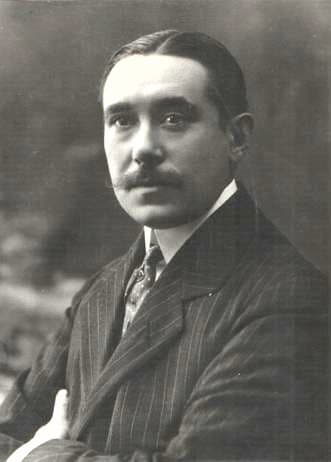
Joaquín Turina, 1914
In his first collection, Mujeres españolas, Op.17, written in 1917, Turina starts with stereotypes: women of Madrid and Andalucia with an accompanying coquette from La Mancha. The sonic images are happy and sentimental, reflections of the 26-year-old’s experience with Spanish music in the hands of composers such as de Falla as much as his own observations. It may be the imagined Spain of gypsies and tambourines as much as the ‘real’ Spain as could be added.
In 1908, Turina was in Paris, and his friends included Debussy, Dukas, Fauré, Ravel, and Albéniz as well as his close friend and fellow Andalusian Manuel de Falla. Albéniz advised him to start concentrating on writing ‘Spanish’ music and leave behind him the formal teaching he’d had in the Schola Cantorum of Paris. His first effort in accomplishing this was his suite Sevilla.
Eight years later, Spanish Women took him over. He composed the three pieces in a rush ‘between 27 March and… 18 April’. In those three weeks, he composed what might be considered a three-part sonata mixing in typical dances from the regions of the titles.
The opening movement includes a chotis in the first theme and a pasodoble in the second theme. The chotis is the Madrid version of the German schottisch dance, which was first danced at the court of Isabella II on 3 November 1850 under the name of ‘Polca Alemana’. As the chotis it became one of the traditional dances of the Madrid people.
Joaquín Turina: Mujeres españolas (Spanish Women), Series I, Op. 17 – I. La madrilena clasica (The Typical Girl from Madrid) (Jordi Masó, piano)
The second movement, considered one of Turina’s finest, structured like a 5-part lied where the second part carries the lilt of the seguidilla, the fourth, that of the guajira. The seguidilla is a dance from Andalucia in a quick triple time. The guajira has a ‘horizonal hemiola’, where there’s an ongoing contrast between 3 and 2.
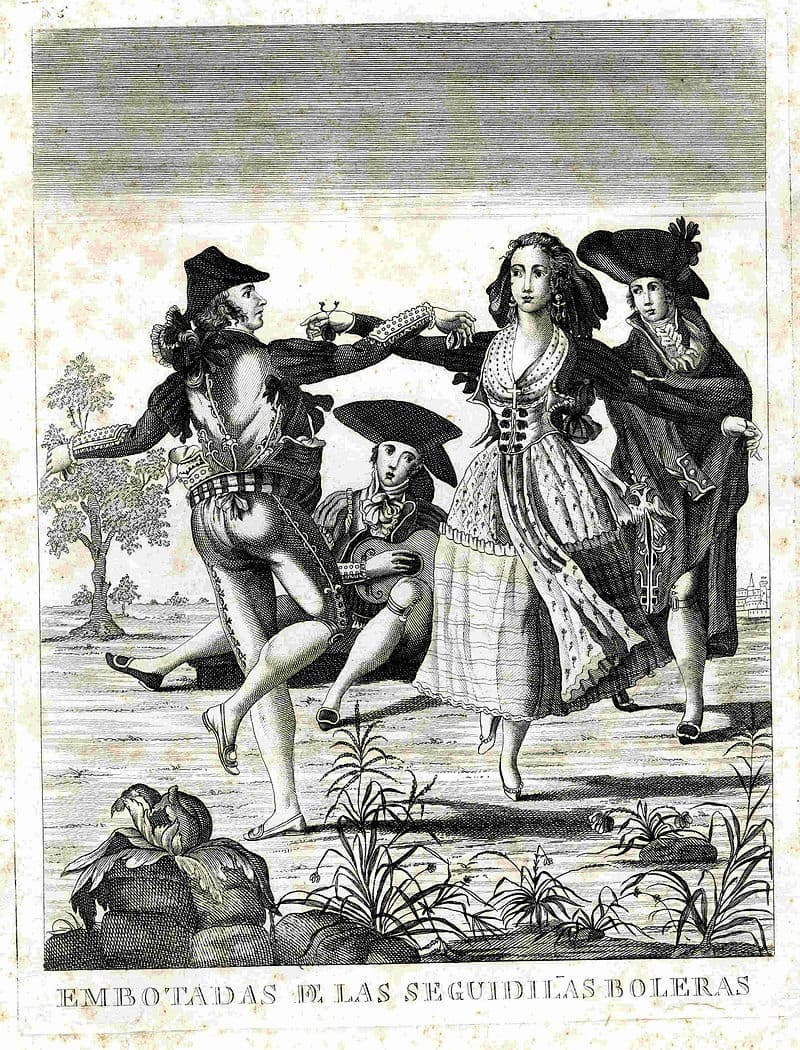
18th century engraving of a seguidilla (Centre de Documentació i Museu de les Arts Escèniques)
Joaquín Turina: Mujeres españolas (Spanish Women), Series I, Op. 17 – II. La andaluza sentimental (The Sentimental Girl from Andalucia) (Jordi Masó, piano)
The title of the last movement, centered around a ‘Manchegan sequidilla, originally had the title of La Manchega coqueta (The Coquette from La Mancha) before receiving its final title of La morena coqueta (The Dark Coquette).
Joaquín Turina: Mujeres españolas (Spanish Women), Series I, Op. 17 – III. La morena coqueta (The Dark Coquette) (Jordi Masó, piano)
The premiere of the work was given by Ricardo Viñes in Paris on 12 June 1917 as part of a concert at the Salle des Agriculteurs.
In 1932, Turina took up his Spanish Women again, this time in a 5-part collection. Now, he’s fleshing out his previous stereotypes, giving them emotions and responsibilities. He opens with not only a gypsy girl but a gypsy girl in love. The underlying idea is the 2/4 rhythm of the flamenco garrotín, an improvised flamenco style in a major key with a cheerful character. Above it is an Andantino melody that complements the garrotín.
Joaquín Turina: Mujeres españolas (Spanish Women) Series 2, Op. 73 – I. La gitana enamorada (The Gypsy Girl in Love) (Martin Jones, piano)
The little florist works her magic with a contrasting hemiola pattern of 6/8 and 3/4, shifting between duple and triple.
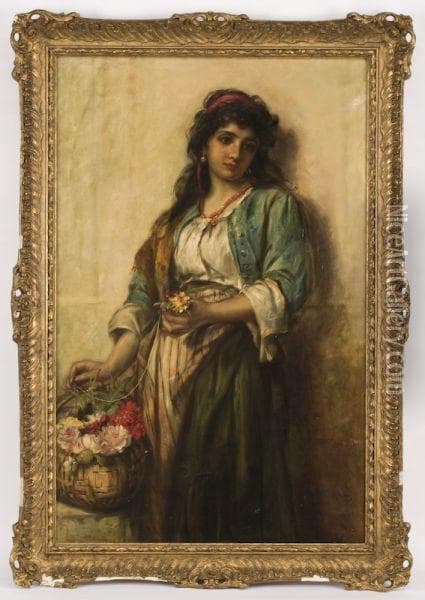
Thomas Kent Pelham: A Gypsy Girl With Flower Basket
Joaquín Turina: Mujeres españolas (Spanish Women) Series 2, Op. 73 – II. La florista (The Flower Girl) (Martin Jones, piano)
The Dancing Girl, in a waltz tempo, has unusual harmonies almost Debussian in nature.
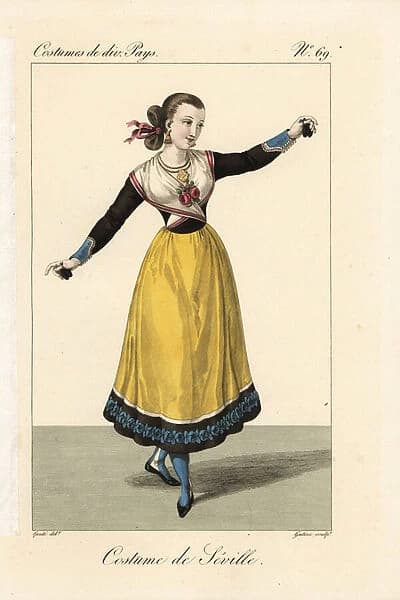
Dancing girl of Seville, 19th century
Joaquín Turina: Mujeres españolas (Spanish Women) Series 2, Op. 73 – III. La senorita que baila (The Dancing Girl) (Martin Jones, piano)
The folk music of Murcia in southeast Spain was an unusual source for Turina, and he used it in this movement.
Joaquín Turina: Mujeres españolas (Spanish Women) Series 2, Op. 73 – IV. La murciana guapa (The Pretty Girl from Murcia) (Martin Jones, piano)
A straightforward sevillana is used for the final movement, about a happy girl from Seville.
Joaquín Turina: Mujeres españolas (Spanish Women) Series 2, Op. 73 – V. Le alegre sevillana (The Happy Girl from Seville) (Martin Jones, piano)
The collection was dedicated to the sculptor Jacinto Higueras (1877–1954). His son, the sculptor Jacinto Higueras Cátedra, did a bust of the composer in 1971.
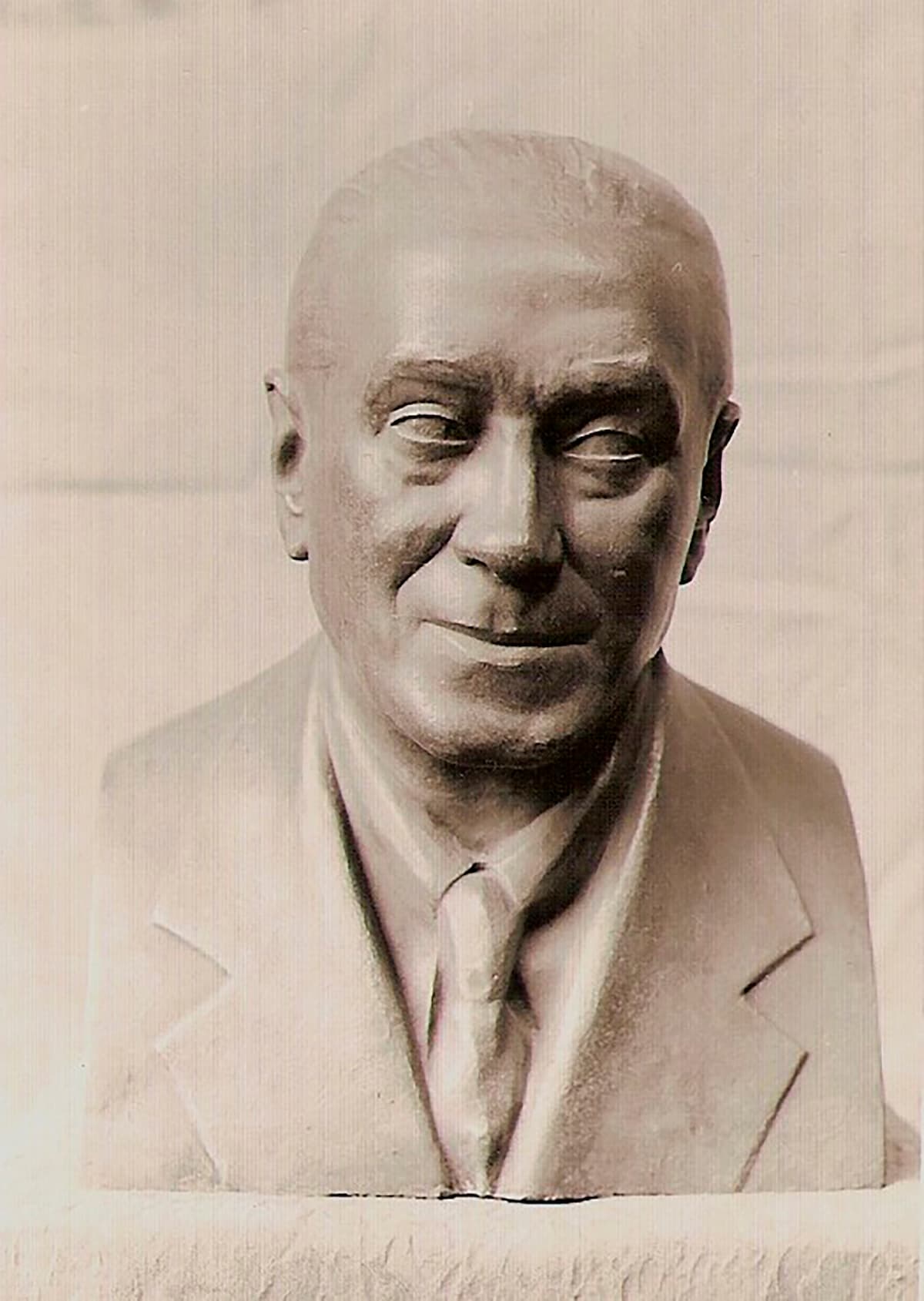
Jacinto Higueras Cátedra: Bust of the composer Joaquín Turina, 1971 (Madrid: Escuela Superior de Canto)
The last collection, appearing in 1935, is really an extension of the earlier sets but now concentrating only on the women of Seville. These are women with jobs (potters and cigar-makers), women of youth and style, and finally, a piece about their fascinating mantillas and combs.
The work opens with the spinning of the potter’s wheel as she pulls up the recalcitrant clay.
Joaquín Turina: Mujeres de Sevilla, Op. 89 – I. La alfarera de Triana (The Potter from Triana) (Esteban Sanchez, piano)
The Local Young Girl opens with a long introduction, rather like a text-less recitative, before the entry of the guajira.
Joaquín Turina: Mujeres de Sevilla, Op. 89 – II. La mocita del barrio (The Young Local Girl) (Esteban Sanchez, piano)
The dance-like movements of the girl from Macarena form a rhythmic background to her motion across the musical page.
Joaquín Turina: Mujeres de Sevilla, Op. 89 – III. La macarena con garbo (The Stylish Girl from Macarena) (Esteban Sanchez, piano)
If we consider Carmen to be the most famous sassy cigar maker in Seville, then we’re not surprised to hear her habanera undulate through the music of the fourth movement.
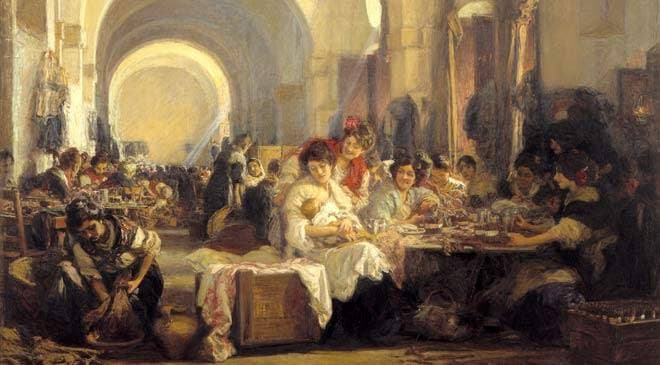
Gonzalo Bilbao Martínez: Las Cigarreras, 1915 (Museo de Bellas Artes de Sevilla)
Joaquín Turina: Mujeres de Sevilla, Op. 89 – IV. La cigarrera traviesa (The Sassy Cigar-maker) (Esteban Sanchez, piano)
The mantilla (a silk or lace scarf worn over the shoulders) is often worn with a comb (the pieneta) holding the scarf off the hair. This hair-covering, now worn primarily on religious occasions, was encouraged during the 19th century in Spain by Queen Isabella II (the same queen behind the chotis dance). Turina sets his music to the rhythm of the sevillana, to end his tribute to the women of his home city.
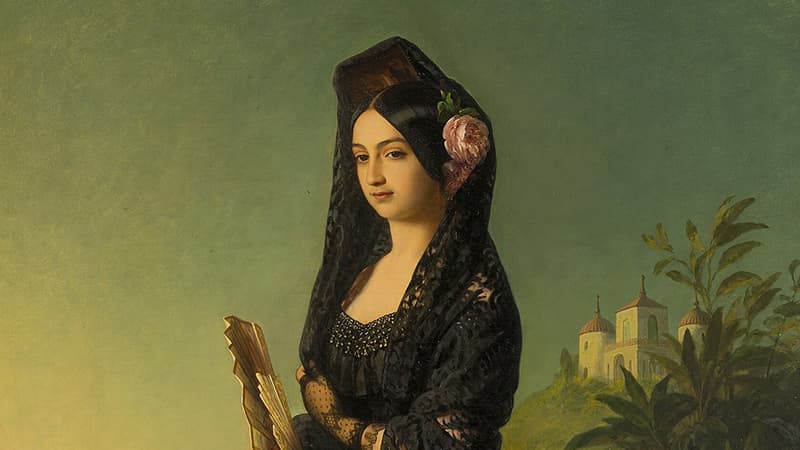
F.X. Winterhalter: The Infanta Luisa Fernanda with mantilla (detail), 1847
Joaquín Turina: Mujeres de Sevilla, Op. 89 – V. Mantillas y peinetas (Mantillas and Combs) (Esteban Sanchez, piano)
Over the twenty years between his first musical impressions of the women of Spain to his final pictures of the women of Seville, we can see Turina’s growth from using the local folk music to show stereotypical women to showing women with distinct personalities and professions. There will also be a sentimental side of these kinds of musical portraits, but Turina, by the end, could catch the individualities and not just the similarities of his subjects.
For more of the best in classical music, sign up for our E-Newsletter
